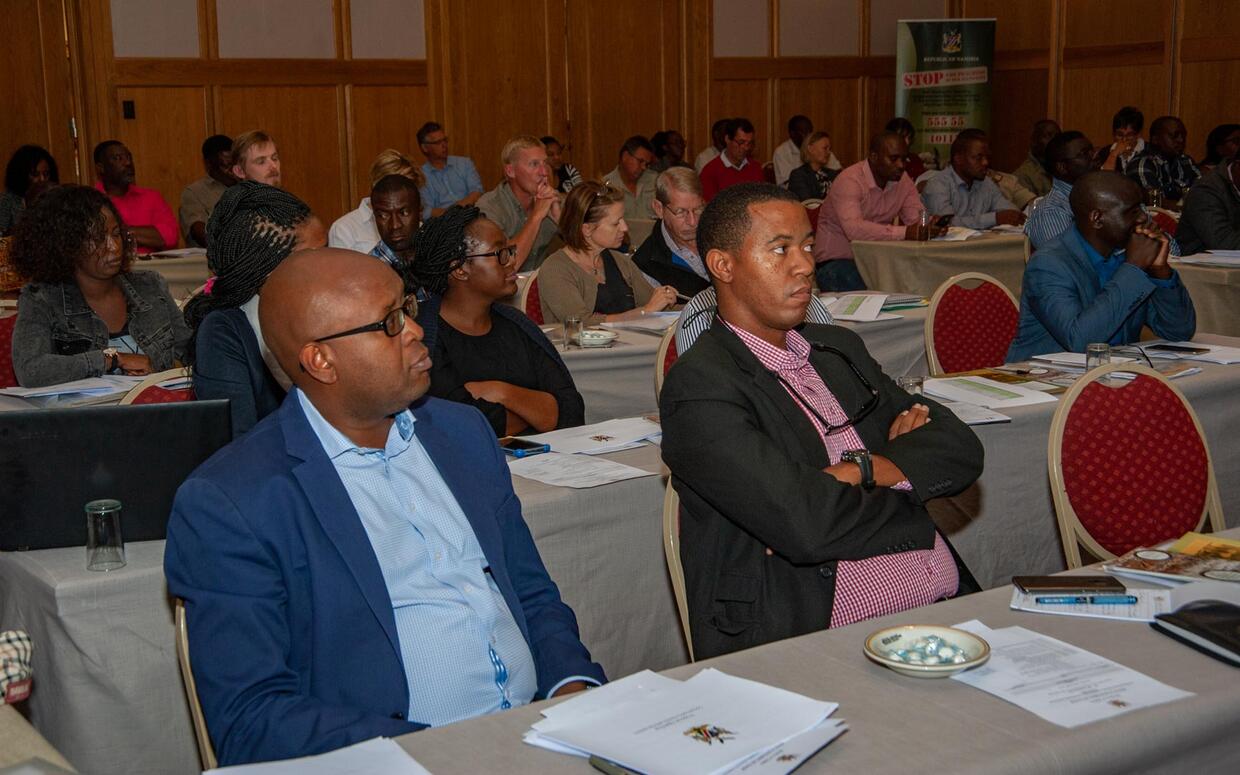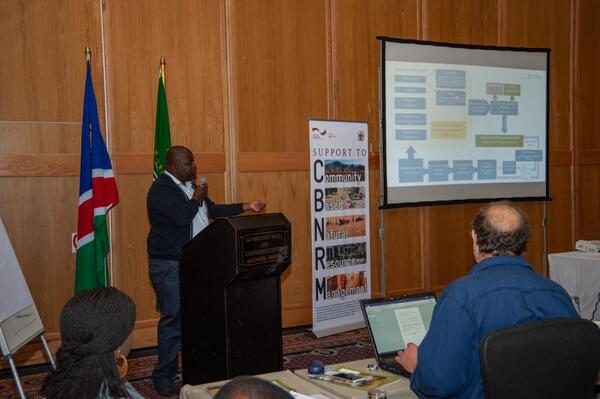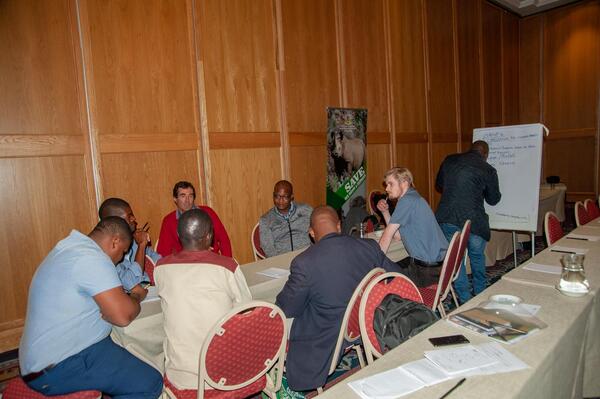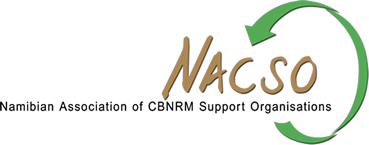
Hunting contracts were on the agenda from the 18th-20th September 2018, when conservancy representatives, the Ministry of Environment and Tourism (MET) officials, and conservation organisations came together for a workshop in Windhoek, at the Safari Court and Conference centre. Issues covered were the head contract between conservancies and the MET, and a template for hunting between conservancies and professional hunters, which together serve as a guide for conservation hunting in Namibia. The aim was to strengthen contracts and promote biodiversity through sustainable utilisation of natural resources.
The workshop was mainly facilitated by Uatirohange Tjiuoro, MET Chief Warden of Community Based Natural Resources Management (CBNRM), who laid out the meeting objectives: “to understand conservation hunting in conservancies, to review the quota setting system, review the existing hunting contract template, develop a head hunting contract between the MET and conservancies, capacitate MET and NGOs regional support staff on conservation hunting and hunting contracts, and improve conservancy governance.”
Communities have been empowered to manage wildlife and other natural resources while benefiting from them. Every year conservancies are issued a quota based on the annual game counts carried out in conservancies by the MET, NACSO’s Natural Resource Management Working Group, other conservation support organisations and conservancy members themselves.
Conservation hunting is the second largest contributor to income in many conservancies after tourism. It brings in sufficient income to run conservancy operations, including anti-poaching activities, game guards’ salaries and providing meat to its member- a valuable dietary supplement. Crucially it pays for these operations and benefits in conservancies with no tourism potential.
However, issues of governance, overharvesting, and wildlife crime among others continue to hinder conservation efforts, including hunting. According to a study done in 2017 to assess the quality of trophies, a decline was noted in the trophy quality of certain high value game in the north-eastern protected areas and communal conservancies. This has been attributed to poaching, hunting pressure and hunting in corridors, a situation which may have worsened by now, due to persistent droughts over the years.
The workshop dealt with burning issues. Some need to be dealt with immediately, especially now with the increasing pressure against hunting, such as the proposed ban on trophy imports considered by the European Union in 2016. “We must be able to demonstrate a rigorous process when setting quotas for trophy hunting, to scientifically justify offtakes and to avoid boycotts and import bans” said Tjiuoro.
Some of the recommendations made from the meeting were that a policy to regulate the minimum elephant tusk sizes and weight should be developed and implemented, and wildlife harvesting quotas should be reviewed and adjusted each year.
The meeting ended on a high note, with decisions left in the hands of the technical committee, which are to meet for further review and comments. A feedback meeting is envisaged in October or November to review the current wildlife utilisation practice and to introduce improved quota setting procedures.


